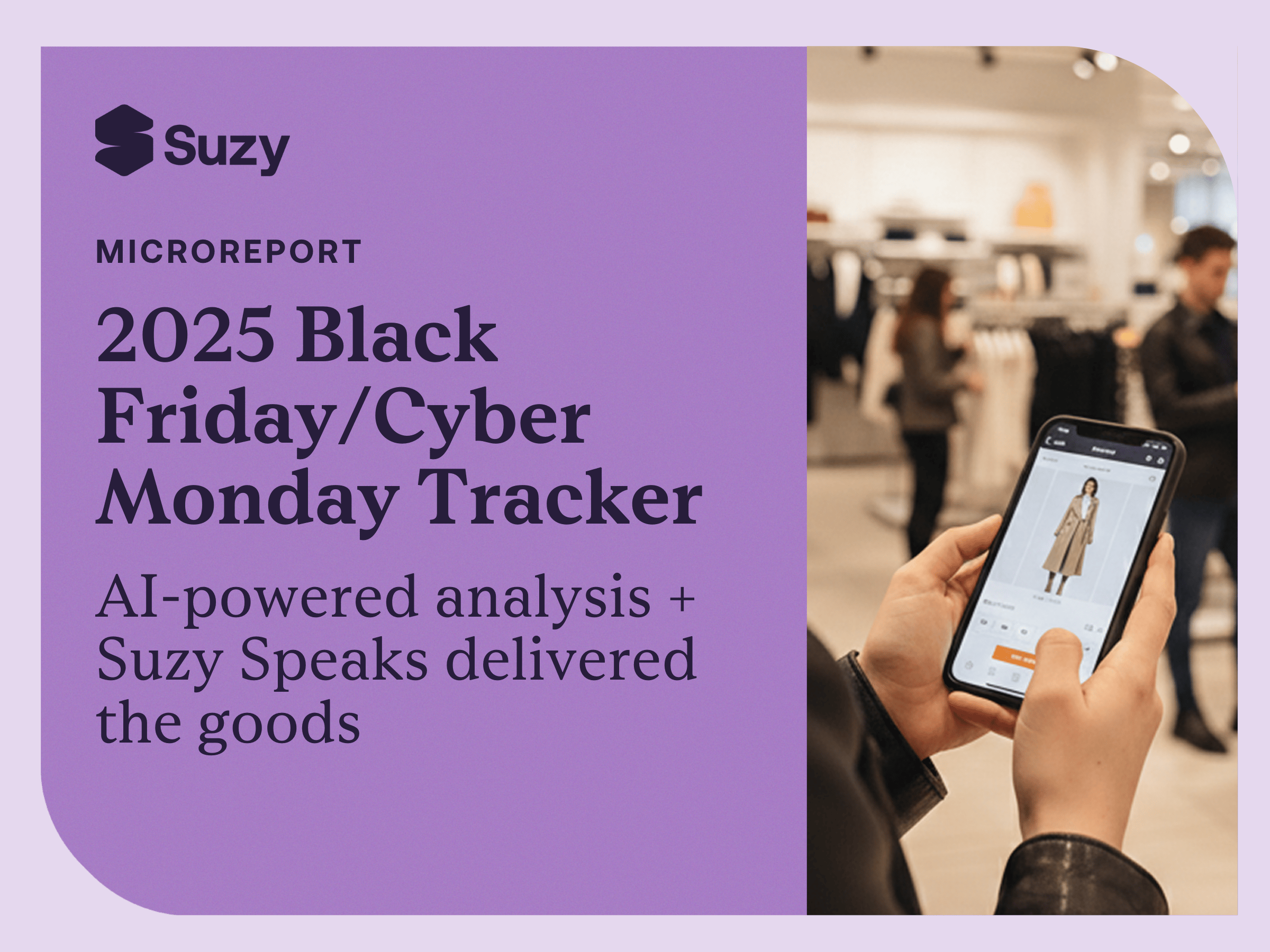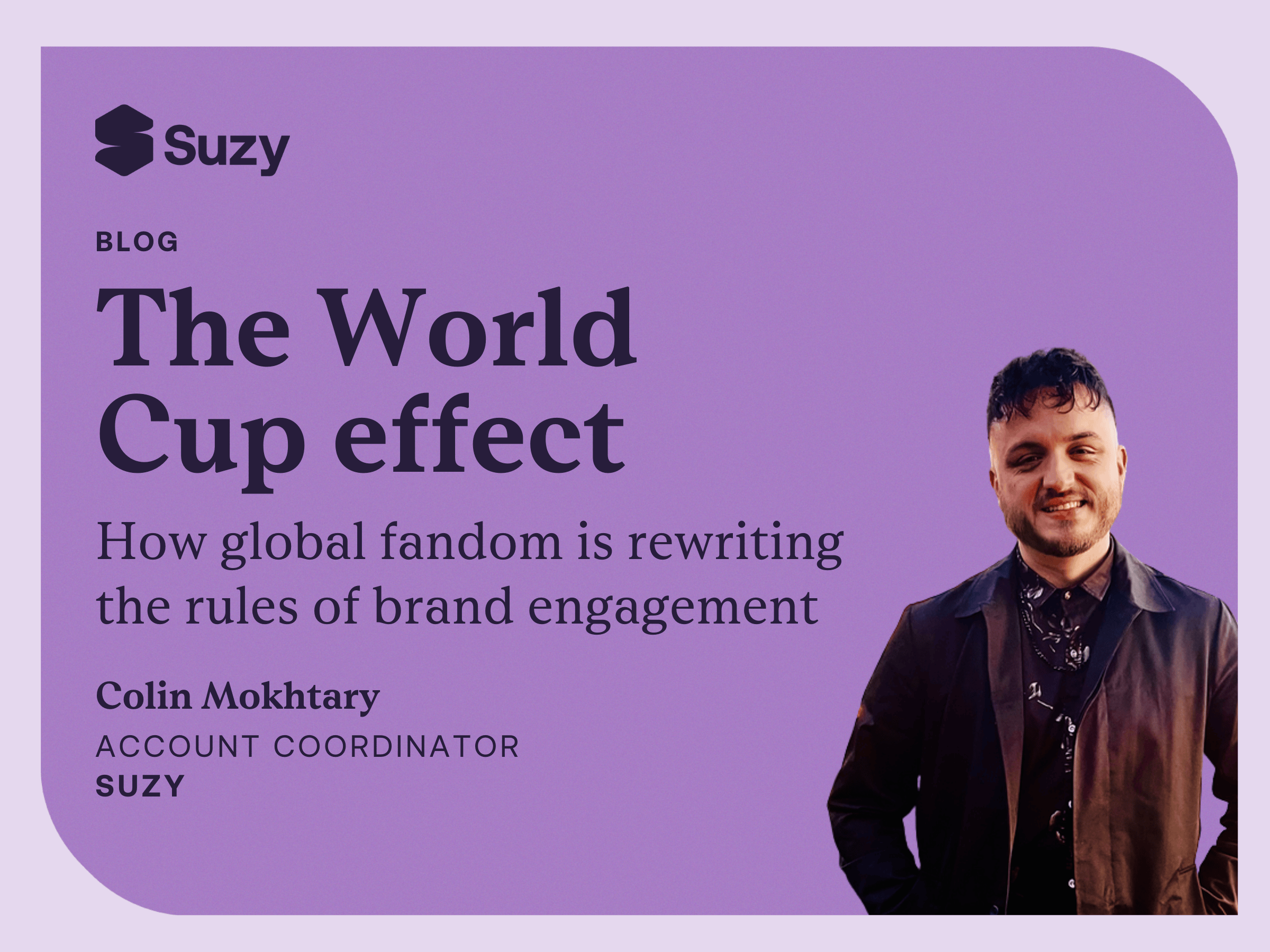How does the iterative process in research improve the accuracy and relevance of consumer insights? Suzy’s Matt Duhe breaks it down.
In an ever-evolving marketplace, where consumer preferences shift at lightning speed, brands must remain agile to stay relevant. Traditional research methods often fall short and are unable to keep pace with the rapid shifts in consumer behavior and market dynamics.
Instead, iterative market research offers a powerful solution to research, enabling organizations to continuously refine their strategies with real-time consumer insights. By embracing this approach, brands not only stay ahead of trends but also empower their teams with data-driven confidence in decision-making.
This blog will explore the iterative process in research research, how to keep your brand in tune with the evolving market, and how to fuel innovation and strategic growth.
Why Traditional Research Methods Fall Short
Traditional research methods are often too rigid and slow to keep pace with the speed of modern markets. They typically involve extensive planning, large sample sizes, and long analysis periods, making them ill-suited for the fast-paced demands of today's businesses. By the time insights are gathered, analyzed, and acted upon, the landscape may have already shifted, leaving brands chasing after trends rather than setting them. This can lead to several issues:
- Outdated Insights: By the time traditional research is completed, the market conditions or consumer behaviors that the research was based on may have changed, making the findings less relevant or even obsolete.
- Missed Opportunities: The inability to act quickly on emerging trends or consumer feedback can result in missed opportunities for innovation or market leadership.
- Inflexibility: Traditional research often lacks the flexibility to pivot quickly when initial findings suggest a change in direction, leaving brands locked into suboptimal strategies.
This is where a more iterative process in research steps in to offer a fresh approach. Unlike traditional models, iterative research embraces a continuous feedback loop, allowing brands to refine their strategies in real-time. Imagine launching a product concept, gathering consumer feedback within hours, making adjustments, and re-testing all within the same week. This agility not only saves time but also ensures that decisions are always informed by the most current data, reducing the risk of missteps in an unpredictable market.The Power of an Iterative Process in ResearchIn contrast, iterative research provides brands with the agility needed to stay ahead of the curve. Here’s how:
- Real-Time Feedback and Adaptation: Iterative research allows brands to gather and act on consumer feedback as it comes in. This means that if a new trend emerges or consumer preferences shift, the brand can adjust its approach almost immediately.
- Incremental Improvement: Rather than waiting for a large study to be completed, brands can make incremental improvements based on ongoing research. For instance, a brand testing a new product concept can use iterative research to tweak features, packaging, or messaging based on continuous feedback from potential customers. This approach not only reduces the risk of failure but also increases the likelihood of success by ensuring that the product evolves in line with consumer expectations.
- Cost Efficiency: While traditional research can be expensive and time-consuming, iterative research often involves smaller, more frequent studies that are quicker to execute and less costly. This allows brands to allocate their research budget more effectively, focusing resources on the areas that offer the most significant potential for impact.
To illustrate, let's look at a real-world example. Let’s consider a yogurt brand that is exploring the idea of launching a new line of plant-based yogurts to tap into the growing demand for dairy-free alternatives. The brand recognizes that entering the plant-based market is a significant move and requires careful consideration of consumer preferences, especially given the competition in the space. To ensure success, they turn to iterative research to guide their innovation process.
The Challenge: Developing a Winning Plant-Based Yogurt
The brand’s challenge is twofold: first, to identify the ideal plant-based ingredients that align with consumer taste preferences and nutritional expectations, and second, to create a product that stands out in a crowded market. Traditional research methods would be too slow and inflexible to keep up with the rapidly evolving plant-based trend, so the brand opts for an iterative research process.
Step 1: Initial Concept Exploration
- Dynamic Segmentation: Before starting innovation exploration, the brand uses Dynamic Segmentation to create precise consumer groups like "Health-Conscious Millennials" and "Eco-Friendly Shoppers." This segmentation ensures that all subsequent research and development are tailored to the most relevant audiences. Having these segments crafted ahead of time gives them the ability to build off of them quickly and gives them a foundation to build the rest of their research on.
- Attitude and Usage Study: The A&U study delves into consumer motivations for choosing plant-based yogurts, their frequency of purchase, and the specific attributes they prioritize, such as taste, texture, nutritional content, and sustainability. The study also explores barriers to trial, such as concerns about taste or price, and identifies key drivers of satisfaction and loyalty among existing plant-based yogurt consumers. This research reveals that while consumers are generally satisfied with the health benefits of plant-based yogurts, there is a significant demand for improved taste and texture, particularly in oat and almond-based options.
Step 2: Concept Development and Testing
- MaxDiff Analysis: The brand employs MaxDiff Analysis to prioritize product attributes such as flavor options, nutritional content, and packaging convenience. For instance, "high protein content" might emerge as a top priority for health-conscious consumers.
- Flavor Profiling: Concurrently, the brand tests flavors like vanilla, mixed berry, and mango through quick-turn surveys, discovering strong preferences for exotic options like mango alongside familiar staples.
- TURF Analysis: TURF Analysis is used to optimize the product portfolio by determining the best mix of flavors and features that maximize consumer reach. This ensures that offerings like "Mango High-Protein" and "Vanilla Low-Sugar" appeal to the broadest audience without overlapping too much.
- Consumer Taste Tests: Real-world testing of the leading formulations gathers detailed feedback on taste and texture, leading to necessary adjustments, such as balancing sweetness in the oat base.
Step 3: Packaging and Branding Iterations
- Packaging Design Testing: The brand tests various packaging designs, focusing on elements like sustainability and high protein content, refining based on consumer feedback from iterative surveys and in-store mockups.
- Message Testing: The brand uses MaxDiff Analysis again to test different taglines and messages, such as "Clean Ingredients," "Gut Health," and "Plant-Powered Nutrition." This helps prioritize which messaging resonates most with target segments, ensuring the final brand message is compelling and aligned with consumer preferences.
- Monadic Testing: Each packaging and branding concept is evaluated independently through Monadic Testing, providing unbiased insights into consumer preferences, and ensuring the final designs resonate with the target audience.
Step 4: Market Testing and Launch Optimization
- Soft Launch Feedback: The brand conducts a soft launch in select markets, closely monitoring sales data and consumer feedback to fine-tune the product lineup, such as focusing more on successful flavors like mango.
- Marketing Adjustments: Based on real-time insights from the soft launch, the brand tweaks its marketing campaigns, potentially emphasizing aspects like sustainability that drive consumer purchases.
Bringing It All Together
By weaving together these advanced research methodologies—Dynamic Segmentation, MaxDiff Analysis, TURF Analysis, and Monadic Testing—the yogurt brand is able to systematically develop, optimize, and launch a new line of plant-based yogurts with confidence. Each method plays a distinct role in ensuring that the product is not only innovative but also closely aligned with the needs and desires of the target consumers.
The result is a product line that is more likely to succeed in the market, as it has been continuously refined through a data-driven, consumer-centric process. The brand's ability to leverage these methodologies not only enhances its agility in responding to market trends but also solidifies its position as a leader in the fast-growing plant-based food segment.
Essential Tools and Partnerships for Effective Iterative Research Process
How can teams set themselves up for success in carrying out iterative research like we’ve outlined in this blog? To execute the iterative research process effectively, having the right tools at your team's disposal is essential. Foundational research, like consumer segmentation, gives your team a strong base to build all future research on. It also provides deep insights into consumer behaviors and preferences and ensures that every decision is backed by robust, targeted data. An agile DIY research tool is also key, enabling teams to quickly gather and analyze data, make swift adjustments, and continuously refine products and strategies in real time.
Equally important is having a trusted research partner who can seamlessly integrate with your team. Whether it’s to provide expert guidance on complex methodologies or to support when additional hands are needed, a partner who acts as an extension of your team ensures that you can navigate even the most challenging research projects with confidence. Together, these tools create a powerful ecosystem that empowers your team to conduct iterative research effectively, driving innovation and ensuring long-term success in an ever-changing marketplace.
Conclusion
In essence, the iterative research process transforms market research from a static, one-time effort into a dynamic, ongoing conversation. It empowers brands to stay relevant, agile, and aligned with their consumers' needs in an ever-changing world. The ability to stay agile and responsive is no longer a luxury—it’s a necessity. Through the strategic use of foundational segmentation knowledge, agile DIY research tools, and expert partnerships, your brand can not only keep pace with change but also lead the charge in innovation. The insights gained from these powerful methodologies allow you to make informed, data-driven decisions that resonate with your target audience, optimize your product offerings, and ensure your brand remains relevant and competitive.
Want to learn more? Book a demo with our team today!
.webp)







